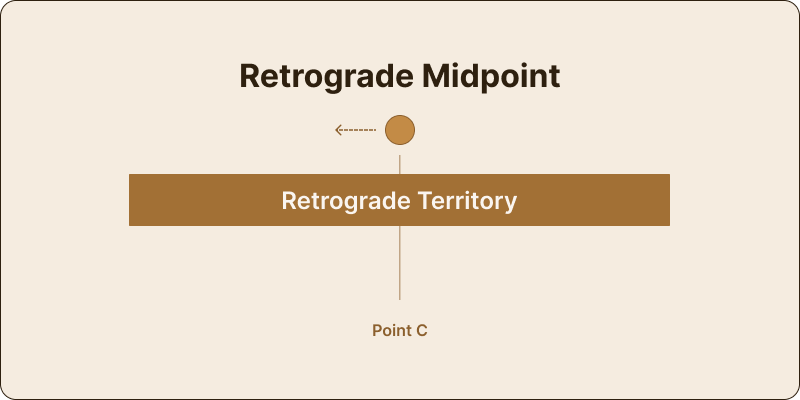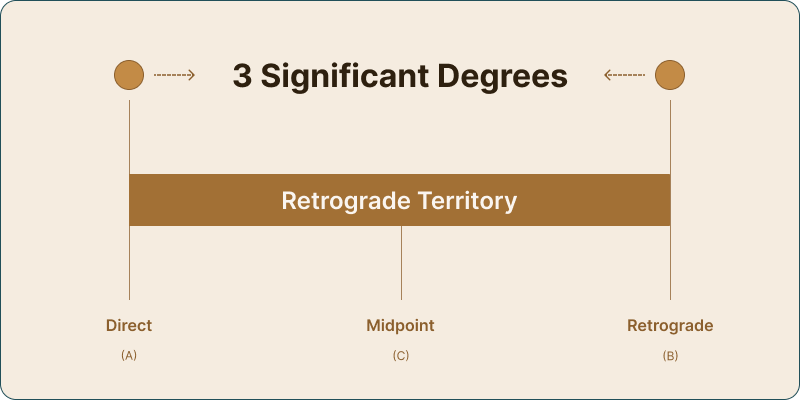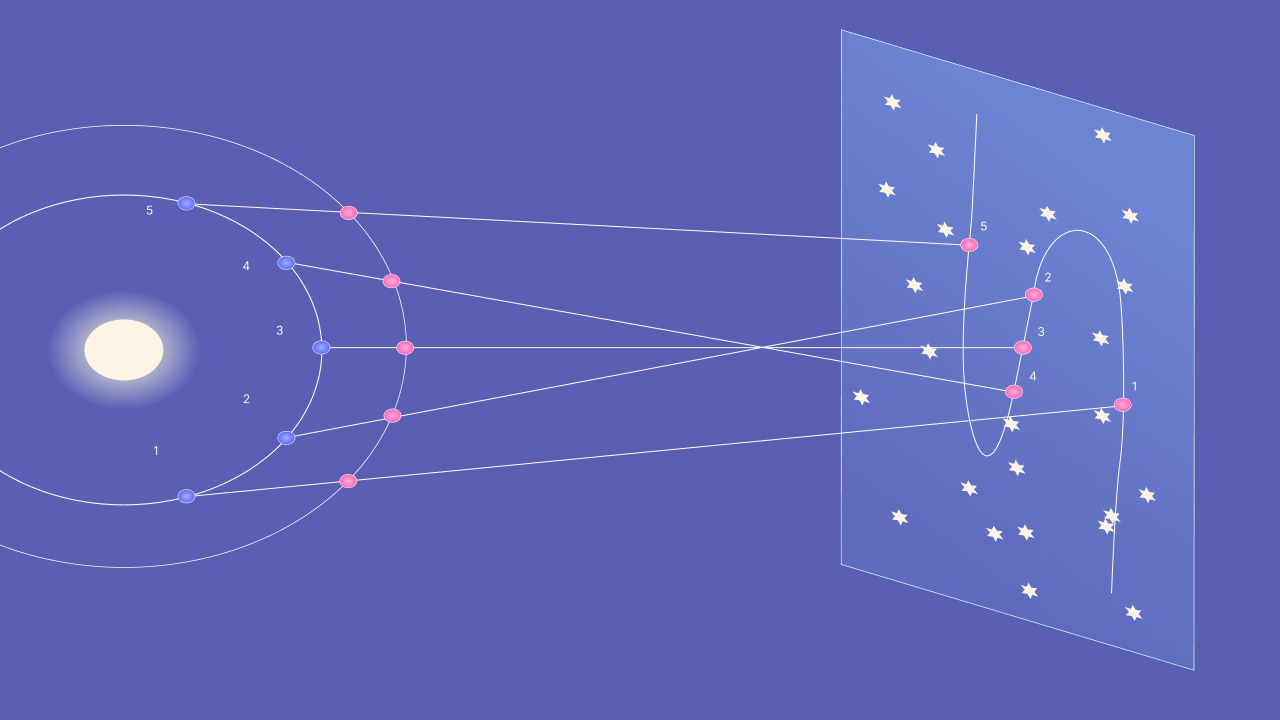Hiding in Plain Sight: The 3 Anchor Points You'll Need to Tell the Retrograde Story in Astrology (Part 2)
Hi Everyone,
This is part 2 of the retrograde series, revised and improved for clarity. I've broken it into two parts, extending the series to 4 parts instead of 3. The details of each part are explained in the introduction.
Introduction
In the last article, we looked at what a retrograde planet is. Astronomically, we saw that it is an optical illusion resulting from our geocentric perspective. Astrologically, we saw that it symbolizes a time of review and reflection.
In this article, we’ll focus on mapping out the structural framework of the retrograde cycle. We'll need this framework to construct a narrative template for the retrograde cycle, which we’ll do in the next part of the series. Once we have this template, we can use it to help us tell the specific story of any retrograde cycle we might consider. In the final part of the series, we’ll do just that - test out the template on a specific retrograde cycle.
Let’s start by nailing down the framework.
Significant Points and Degrees of the Retrograde Cycle
Significant Points
We saw in Part 1 that there are three phases to the retrograde cycle. As shown in Graphic 1 below, these phases include two shadow periods and a retrograde period sandwiched between them. As shown in Graphic 2 below, I call the first shadow period a reconnaissance period and the second shadow period an integration period.


As we covered in part 1 and as seen in the graphics above, all three phases of the retrograde cycle take place over the same stretch of territory, which we can call the retrograde territory. In both graphics above, the boundaries of this territory are demarcated by Point A and Point B. We can add a third point at the center of the territory to further delineate it, as shown by Point C in Graphic 3 below.

Using these three markers, we can identify five key moments, or significant points, in the retrograde cycle: 1) when the planet first enters the cycle; 2) when it turns retrograde; 3) when it reaches its halfway point; 4) when it turns direct; and 5) when it leaves the cycle. For brevity, we can call the point when it first enters the retrograde cycle the reconnaissance point; the point when it turns retrograde the retrograde point; its halfway point the midpoint; the point when it turns direct the direct point; and the point when it leaves the cycle the integration point. Let’s look at each of these points.
The Reconnaissance Point
The reconnaissance point initiates the first shadow (or reconnaissance) period and the first leg of the retrograde cycle, as shown in Graphic 4 below. As we saw in part 1, during this leg of the cycle, we take our first survey of the retrograde territory, getting a sense of what lay ahead, even if only subliminally.

The Retrograde Point
The retrograde point initiates the retrograde period of the cycle. When people say a planet is retrograde, they are referring to a planet in this part of the cycle. When the planet enters this period, it signals the initiation of a time of review and reflection.

The Midpoint
The midpoint bisects the retrograde cycle. Although the planet crosses over the position of the midpoint three times during its cycle, the midpoint only happens once - when the planet opposes or conjuncts the Sun during the retrograde leg of its cycle.

To distinguish this moment from the other two crossings, I call it the solarization point, or solar point for short. Solarization is a photographic technique that partially reverses light and dark, often creating distinct lines at the edges. I couldn’t find a solarized image that I could use here, but the image below is a negative of a lion. In negatives, light and dark are also reversed, giving a sense of the effect. The difference is that in negatives, light and dark are completely reversed rather than partially.

Drawing on the symbolism of the reversal of light and dark, we can posit that the solar point represents a moment of clarification during the retrograde cycle when we see something familiar in a new way. Solarization’s partial effect fits here in that what we see in a new way will be specific to the planet that is retrograding. At the times of the other two crossings, we may have subtle experiences that anticipate (reconnaissance crossing) or integrate (integration crossing) this moment of clarity.
The Direct Point
The direct point initiates the integration period of the cycle. During this final stretch of the cycle, we integrate what we experienced in the first two legs of the cycle.

The Integration Point
Finally, the integration point marks the moment when the retrograde cycle ends and its trek through the new stretch of territory from which it initially turned back begins.

Significant Degrees
As we have seen, the five significant points discussed above mark the major turning points of the retrograde cycle. Due to the back-and-forth pattern of the planet during the retrograde cycle, some turning points occur at the same spot in the territory as others. Because of this repetition, we can pare down the five significant points to three significant degrees.
Looking at Graphic 9 below, we see that the reconnaissance (Rc) and direct (D) points occur at point A, while the retrograde (Rx) and integration (I) points occur at point B. The midpoint degree (point C), where the planet makes its solar opposition or conjunction, is crossed over three times during the cycle, once in each phase.

We can call the degree demarcated by point (A) the direct degree, the degree demarcated by point (B) the retrograde degree, and the degree demarcated by point (C) the midpoint degree, as shown in Graphic 10.

Conclusion
With the five significant points, we’ve established the anchors we’ll use to construct a template for the retrograde story in the next part of the series. To help us shape the narrative arc of the story, we’ll draw on the concept of the developmental hesitation mentioned in Part 1. A hesitation describes a period of pause and retreat that occurs before a developmental shift, serving as a preparation period for entering the next stage of development.1 This pattern can be seen as a fractal of a larger cosmic pattern, which we also see in the retrograde cycle.
With the three significant degrees, we’ve established the anchors we’ll use in the final part of the series to individualize each retrograde cycle's story using the Sabian symbols. The Sabian symbols are word images for each degree of the zodiac. Incorporating their symbolism will help us tune into the specific meaning of a cycle.
Cover Image Credit

More…
About Pass It On Astrology
Pass It On Astrology is my long-term vision for an astrology curriculum that fosters confidence, competence, freedom, innovation, and creativity in students of astrology. For more details, see the About page.
Proposed Curriculum
You can read about the proposed curriculum design for the Pass It On Astrology vision in the article, Astrology Curriculum Design: Freeing Creativity, Cultivating Competence, and Fostering Inner and Outer Security.
Updates
January 29, 2025
I added a link to Part 1 of the retrograde series below.
I moved the cover image credit above the More… section
In the first sentence of the article, I added a link to Part 1. I did the same in the first sentence of the Significant Points section.
I added a section header “Conclusion” to the final part of the article. Also, I wasn’t clear that the template will be built from the five significant points and the concept of the hesitation. The three significant degrees will allow us to individualize it. I updated the Conclusion to clarify that. I apologize for the confusion.
I updated the midpoint graphic as I mistakenly used an older version.
References
Luvmour, Josette., & Lumvour, Sambhava. (1997, July 1). Natural Learning Rhythms: Discovering How and When Your Child Learns (Revised edition). Celestial Arts.
Notes
See Luvmour & Luvmour





Hi Everyone, Just a quick note to say that I updated the final two paragraphs to include the relevance of the five significant points. It's not a huge deal but it clarifies things and I felt making the change was warranted. I also added a Conclusion header, which will make it easier for you to know if you've read the updated version or not. Thanks for your understanding and patience!